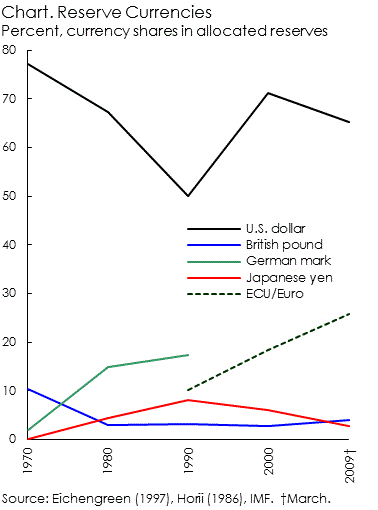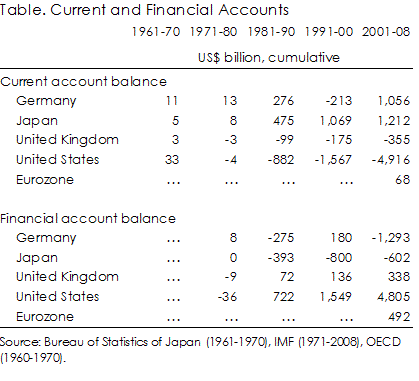Rise and fall of reserve currencies
26 August 2009
Ousmène Mandeng, Ashmore Investment Management
Reserve currencies move around more than meets the eye. The fall of the British pound and coincident rise of the dollar during the interwar and immediate post-war period is often portrayed as the only historic precedent of a change in international currency hegemony. Yet, the rises of the German mark and Japanese yen during the1970s and 1980s suggest that central banks are willing to undertake significant adjustments to their reserve portfolios. This may provide interesting clues as to possible currency trajectories and scope for future changes in the currency composition of the international monetary system.
Reserve currencies have changed with economic realities. Recent history suggests that complex institutional arrangements are not necessary to promote new currencies. History also affirms that reserve currencies do co-exist but that displacements can occur rapidly when the foundations of a currency are called into doubt. History further illustrates that neither full capital account liberalisation nor current account deficits are necessary conditions for the adoption of new reserve currencies. Those factors show that the barriers of entry for new reserve currencies may not be as high as often argued.
The dollar’s dominance became institutionalised with the Bretton Woods system of fixed exchange rates where currencies were pegged to the dollar and the dollar itself was fixed to gold. The subsequent rise of the mark can also be attributed to the establishment of the European monetary system. Yet, the yen rose without an explicit currency deal; the SDR never became a principal reserve asset despite the fact that the IMF instituted as much. At the same time, the dollar has preserved its relative dominance even though the Bretton Woods system collapsed and the fact that subsequent floating of exchange rates can be seen as an explicit rejection of a paper (i.e. not backed by gold) dollar-based system.
Doubts about the central role of the dollar for the international monetary system emerged relatively early. A debate about the need to reduce reliance on the dollar cumulated in 1969 in the first allocation of SDRs by the IMF. Concerns about the dollar subsequently intensified amid rising inflation in the U.S. The emergence of Germany and Japan as major economies further supported a shift in relative economic powers. This fuelled the rise of the mark and the yen as reserve currencies during the 1970s and 1980s (Chart).The dollar depreciated against the mark and the yen from DEM3.65and JPY353 per dollar in 1970 to DEM1.96 and JPY203 in 1980.
The rise of the mark and yen occurred as both Germany and Japan maintained de facto capital controls and current account and, in1971-80, overall balance of payments surpluses (Table). In Germany and Japan, capital controls were relaxed sufficiently to allow the official sector to accumulate reserve assets. The maintenance of current account surpluses in Germany and Japan also defies the often argued notion that the adoption of reserve currencies depends on the issuing country running large current account deficits to allow the official sector to accumulate sufficient claims.
The current global crisis has brought about significant changes in the international economy and in the perception and distribution of risks. In the past, this caused relatively sudden shifts in the composition of reserve currencies and coincided with significant exchange rate adjustments. Today, investors can also not ignore the international monetary implications of the crisis and the likely effect it will have on the structural performance above all of the dollar. While incumbency and inertia favour existing reserve currencies, they are not sufficient to prevent new entrants.

